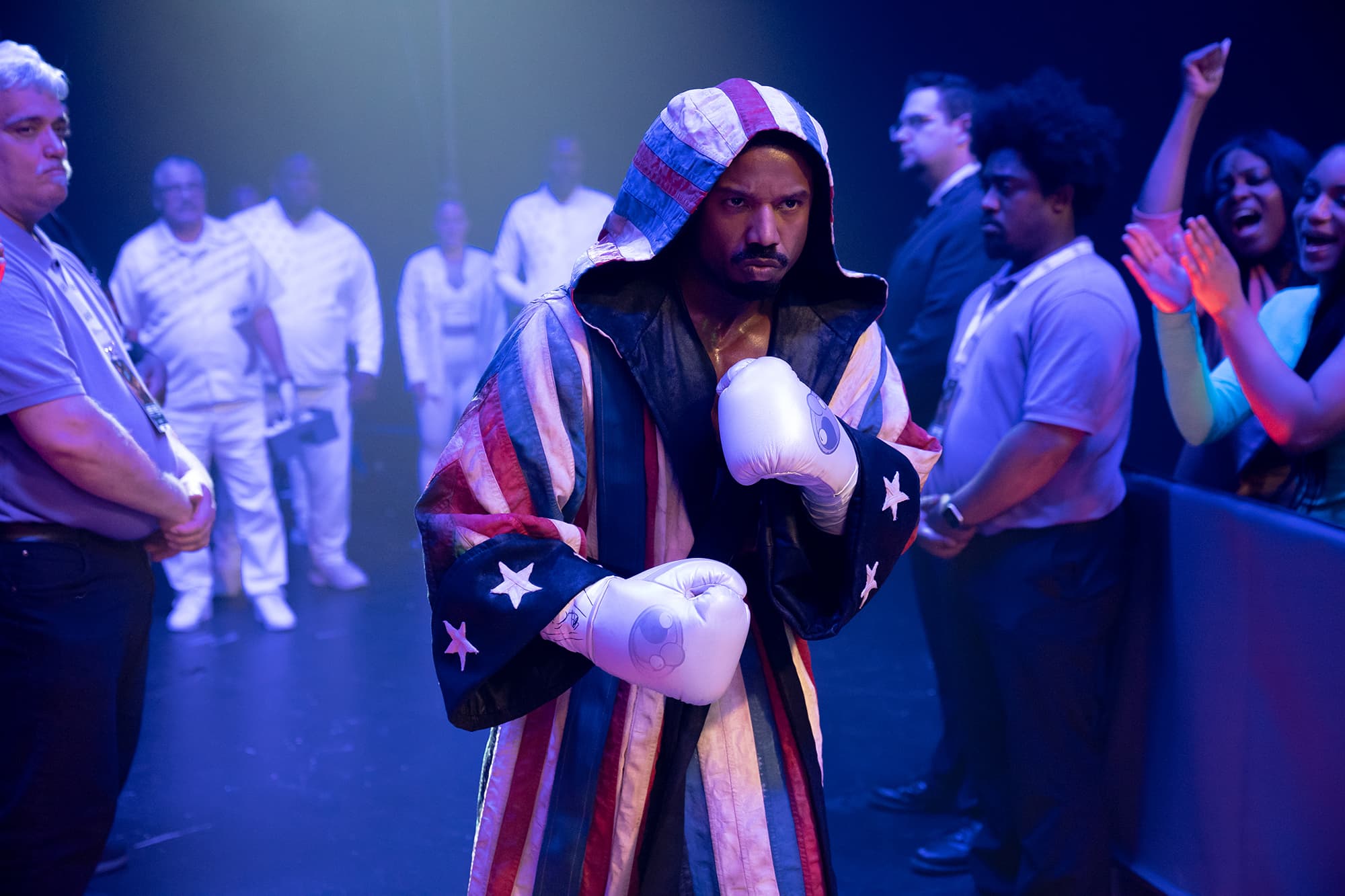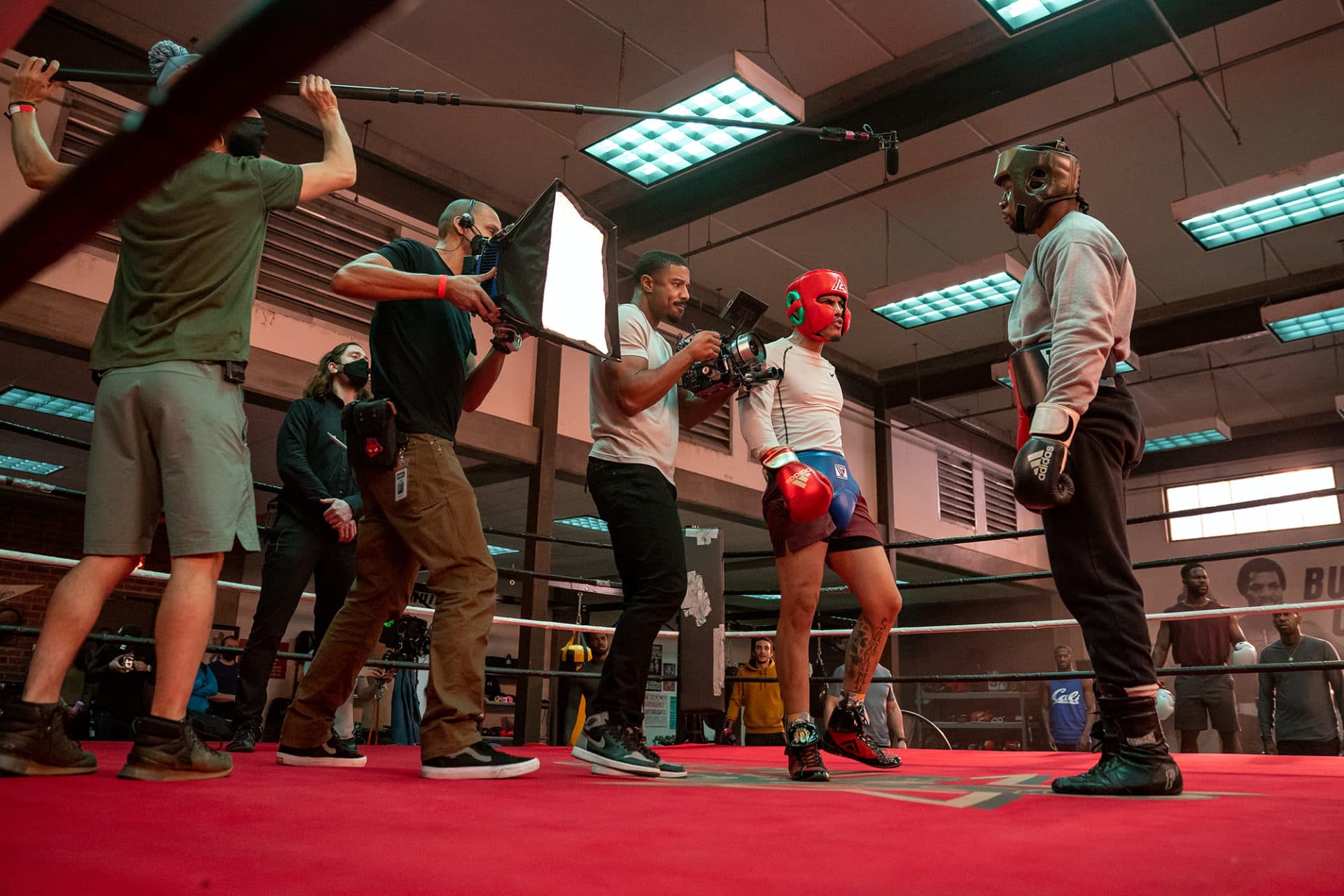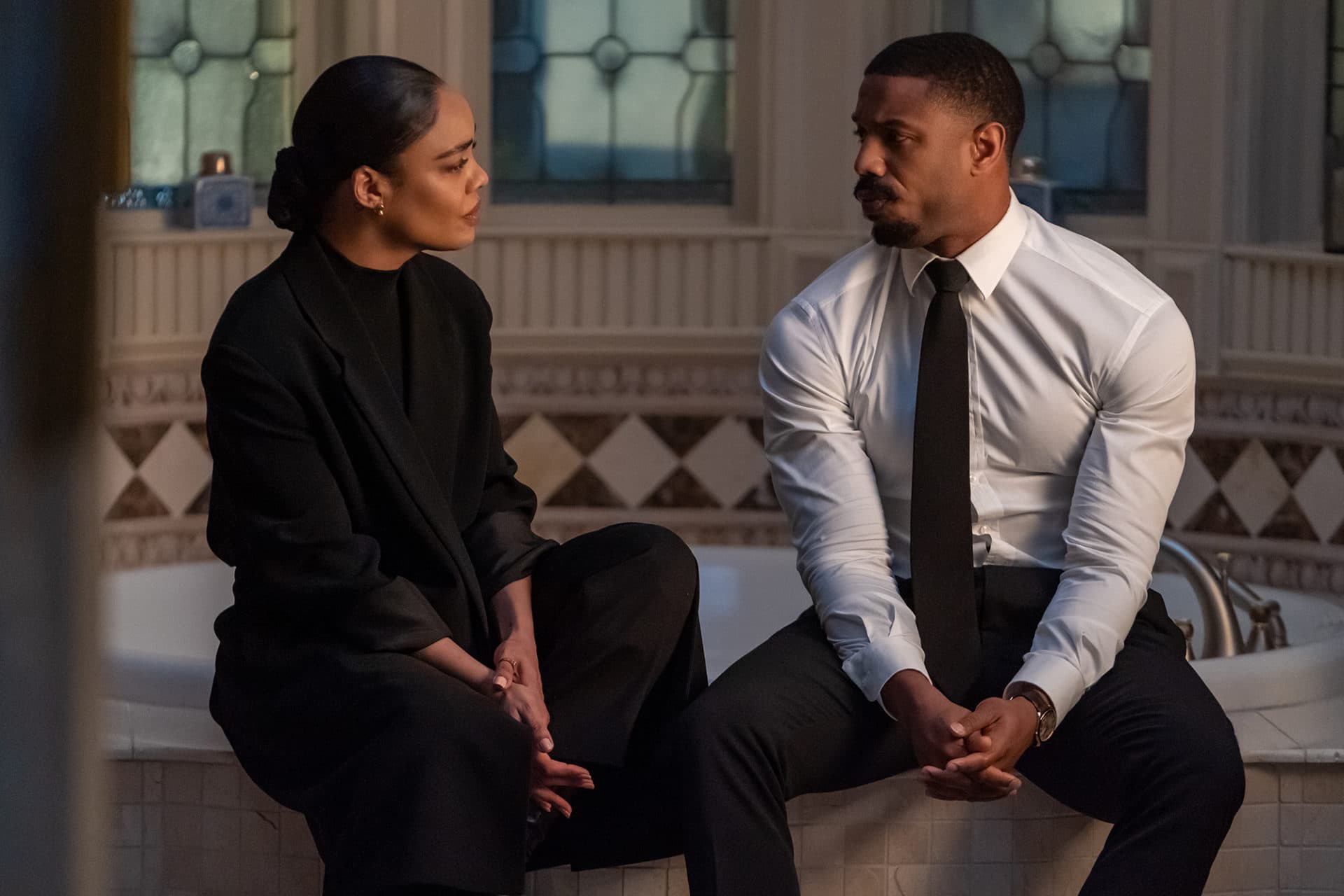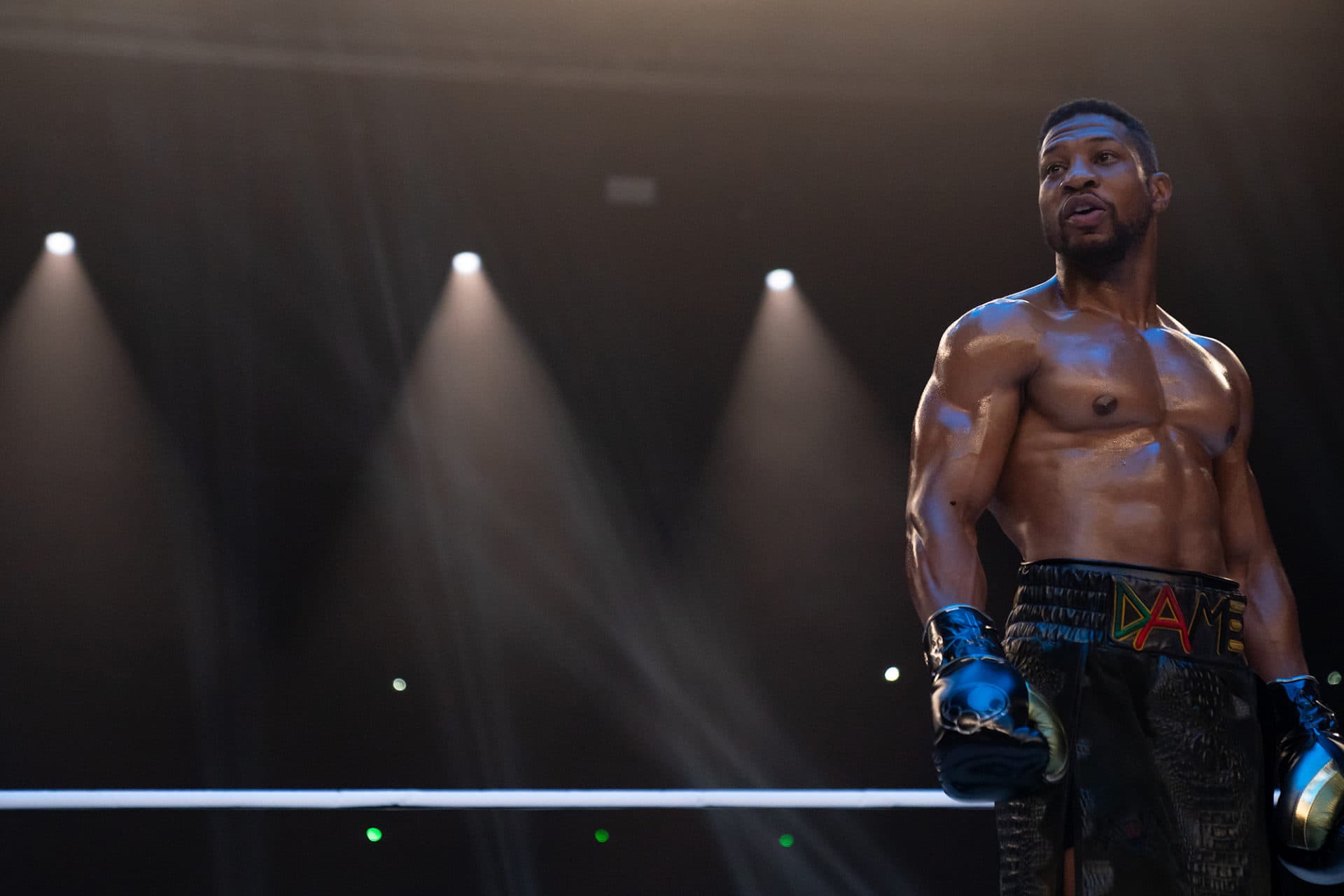Advertisement
Review
Michael B. Jordan makes his directorial debut with 'Creed III'

Ryan Coogler’s 2015 “Creed” was a miracle of a movie, reverently reimagining the moribund “Rocky” franchise through modern eyes. Midway between the gritty, docudrama realism of the director’s indie debut “Fruitvale Station” and the comic book spectacle of his blockbuster “Black Panther,” “Creed” was the second installment in Coogler’s increasingly mythic trilogy about fatherless boys struggling to become men, all three starring his muse/alter-ego Michael B. Jordan. It’s still their finest work, as far as I’m concerned – an exquisitely wrought male weepie harkening back to the modest, character-driven pleasures of the original 1976 “Rocky,” but with contemporary concerns about race, parentage and responsibility. Sylvester Stallone showed uncharacteristic grace in allowing a young filmmaker free rein with his signature creations, and Coogler returned the favor by writing a beautiful capstone to his career.

It wasn’t easy when “Creed” first came out, trying to explain to people how “Rocky VII” was actually one of the best movies of the year. (As with “Top Gun: Maverick,” sometimes great films come from dubious provenances.) But after the picture caught on, it was sadly unsurprising to see Stallone elbow his way into writing the sequel while Coogler was otherwise occupied in Wakanda. 2018’s “Creed II” was the movie everyone worried “Creed” was going to be, doubling down on the dumb Drago stuff from “Rocky IV” and abandoning the attention to character in favor of a “this time it’s personal” revenge plot, which often seems like the only story beat Stallone understands. (His recent foray into television, Paramount Network’s “Tulsa King,” started out as an appealingly lighthearted, fish-out-of-water crime comedy until the star apparently decided we’d rather watch him avenge his daughter’s rape. Sigh.)
Stallone’s acrimonious departure from the franchise and embarrassingly public feud with producer Irwin Winkler has left us with a Rocky-less “Creed III,” which is a welcome development for the series, even if it seems slightly weird that nobody mentions the guy anymore. Scripted by Coogler’s brother Keenan and “King Richard” writer Zach Baylin, it’s also Jordan’s directorial debut – an assignment the actor digs into with some big, brash visual ideas that aren’t always supported by his camera department. The Italian Stallion has exited the ring, but this sequel is still very much in conversation with 1982's “Rocky III,” during which a comfy champ lost the eye of the tiger and got his clock cleaned by Mr. T’s ferocious street-fighter, Clubber Lang. The new movie isn’t a straight-up remake, but there’s a formula here, and they’re sticking to it.
When we catch up with Adonis “Donnie” Creed he’s happily retired from fighting, “getting his Don King on” as a promoter out of his dad’s old Los Angeles Delphi gym. (He’s also a model for Ralph Lauren.) The movie pointedly indulges in the “Rocky” sequels’ habit of wallowing in how ridiculously rich these characters are, with Tessa Thompson’s Bianca producing one gold record after another out of a home studio in their massive mansion. But into the lap of all this luxury lunges a figure from the past. Jonathan Majors’ Damian “Dame” Anderson used to have Donnie’s back during their bad old days in a group home together. Kid Creed even used to carry gym bags for this Golden Gloves contender, until an altercation outside a liquor store sent Dame to prison for 18 years. Now he’s out, and looking for a shot at the title.

The best scenes in “Creed III” are the understated, early interactions between Donnie and Dame, the latter a walking reminder of a traumatic childhood our hero has been trying to forget. Majors has a hulking, magnificently malevolent screen presence, regarding Donnie’s outrageous affluence with the slightest of sneers, insisting he’s not here for a handout while the subtext of every sentence screams: “You owe me, kid.” After all, Adonis Creed is easily the biggest nepo baby in the history of boxing, and now along comes a big, scary brawler to call him on his privilege.
Their relationship is so psychologically sound that the deft performances by Jordan and Majors carry the film through some often-intentional absurdity. Coogler’s “Creed” was as grounded as its run-down Philadelphia locations, whereas Jordan’s sequel aims to be a super-sized spectacular, shot with IMAX cameras and prone to credulity-straining, melodramatic flourishes. The obligatory training montage is practically a parody of itself, with Donnie beating the crap out of a giant redwood tree and at one point dragging an entire plane across the tarmac himself. Why settle for running up some dinky art museum’s steps when you can scale the heights of Mount Lee and pump your fists atop the Hollywood sign?
Jordan is a famously rabid anime fan (he’s even placed some favorite posters in Donnie’s childhood bedroom) and has visualized the film’s boxing sequences as boldly expressionistic flights of symbolic fantasy. But he’s let down in a big way by cinematographer Kramer Morgenthau, who flattens all these evocative images into a hazy, low-contrast, digital blur. Morgenthau’s the cameraman who made “Thor: The Dark World” too dark to see, and was responsible for “The Many Saints of Newark” looking more like television than the show that inspired it. But he’s hardly the only one to blame here, as “Creed III” suffers badly from the slapdash visual shortcuts that plague so much of studio filmmaking these days.

The final bout is supposed to be taking place at a sold-out Dodger Stadium, but may as well have been shot in front of the weather map at your local news station for all the care that’s been taken to bring off the illusion. I hate that this is what films look like now. Watching “Creed III” and that abominable new “Ant-Man” thing within the same week had me lamenting to a friend how much I miss when people went places to make movies. (I suppose a lot of the unconvincing crowd and concert scenes we’ve been seeing lately are partially due to COVID precautions, but I have a sinking feeling that a lot of these corners are going to remain cut permanently.)
There’s also a curious disconnect here on the screenplay level. Our hero spends the movie constantly being counseled by his wife and other wise characters that not every problem in life can be solved with your fists. His stepmother (once again played by Phylicia Rashad) is given a big, juicy hospital bed monologue in which she talks about how her son is smart enough to know when not to fight. Dame doesn’t really even represent a threat — he’s just talking trash on cable television, hurting nothing more than Donnie's fragile ego. Yet at a seemingly arbitrary moment in the movie, all of these ideas are abruptly abandoned and everyone decides it's time for the big fight. I guess this is the filmmakers giving the audience what they think we want, which is fair. But given the excellence of the first “Creed,” I think it’s also fair for us to want a little more.
